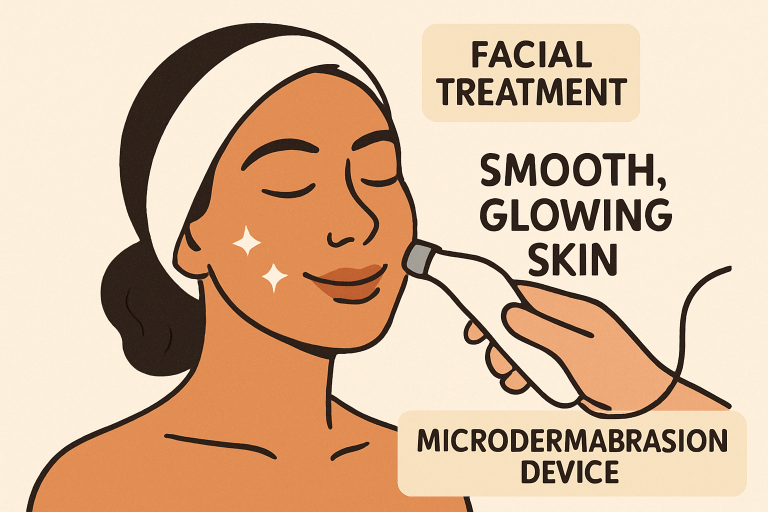Microdermabrasion is a popular non-invasive skincare procedure for achieving smoother, more vibrant skin without extensive downtime. It targets common skin concerns and improves overall complexion. It’s popular in cosmetic clinics for individuals battling dull skin, acne scars, or early signs of aging. Professional practitioners offer tailored procedures for results and safety.
Designed for individuals seeking immediate improvement in skin tone and texture, microdermabrasion is suitable for various ages and skin types. The treatment’s minimally invasive nature makes it a preferred alternative to more aggressive procedures, boasting minimal recovery time. With professional offerings like microdermabrasion Virginia Beach, you can experience personalized treatments that address your unique cosmetic goals while educating you on proper aftercare for lasting results.
What Is Microdermabrasion?
Microdermabrasion is a gentle, cosmetic exfoliation procedure designed to remove the outermost layer of dead and dull skin cells from the face, neck, or décolletage. This treatment involves using a specialized handheld device that either sprays tiny crystals onto the skin or utilizes a diamond-tipped wand to mechanically abrade the skin’s surface. By clearing away old skin cells, microdermabrasion instantly reveals a brighter and healthier complexion. The minimally invasive technique is safe for most skin types and is often performed in a series for cumulative improvements.
Benefits of Microdermabrasion
This procedure enhances skin texture and tone by promoting smoother skin by eliminating dead skin cells. It reduces fine lines and wrinkles through collagen production, minimizes pores and blackheads, and improves skin absorption of skincare products, thereby maximizing the effectiveness of your skincare regimen.
Who Should Consider Microdermabrasion?
Microdermabrasion is ideal for individuals dealing with mild surface imperfections—such as rough skin texture, light acne scarring, early signs of sun damage, or hyperpigmentation. It’s also popular for those looking to refresh their skin without intensive recovery periods. However, if you have active acne, rosacea, eczema, or highly sensitive skin, it’s important to consult with a dermatologist before undergoing treatment. Professional assessment ensures personalized care, minimizes risks, and determines if microdermabrasion is the best option for skin concerns.

The Procedure: What to Expect
The esthetician evaluates the skin, discusses goals, and cleans the face to ensure safety. A handheld device exfoliates the outermost layer using microcrystal spray or a diamond-tip wand. A gentle suction removes debris and stimulates blood flow for natural radiance. The treatment typically lasts 30-60 minutes, with mild sensations. After exfoliation, calming serums, moisturizers, and sunscreen are applied to soothe and protect the treated skin. The experience is convenient and fits busy schedules.
Post-Treatment Care and Recovery
Mild redness or heightened sensitivity is common but usually diminishes within hours. Avoid direct sunlight, apply high-SPF sunscreen daily, and avoid using exfoliants or retinoids for 24 hours. Maintain results with proper hydration and gentle skincare routines to reduce irritation.
Potential Side Effects and Risks
Microdermabrasion is generally well-tolerated, but some may experience temporary redness, mild swelling, sunburn-like sensations, increased sun sensitivity, and minor bruising or spot irritation. Following post-session guidelines reduces the likelihood of adverse reactions.
Comparing Microdermabrasion to Other Skin Treatments
Unlike deeper cosmetic procedures such as chemical peels or ablative laser resurfacing, microdermabrasion works at the skin’s surface. This makes it well-suited for mild concerns and frequent maintenance without risking significant downtime. Chemical peels penetrate further and require more recovery, but may be preferable for stubborn pigmentation or pronounced wrinkling. Laser treatments also offer dramatic results for specific conditions, but can involve discomfort and longer healing. Consulting with skincare professionals helps you understand which method aligns with your desired outcomes and lifestyle.










+ There are no comments
Add yours